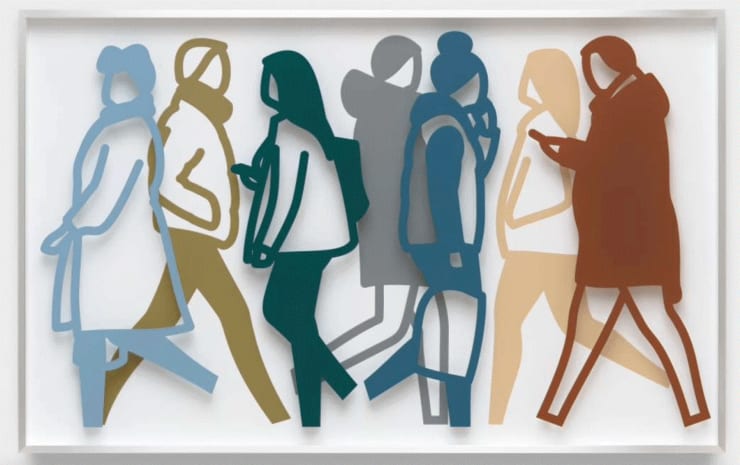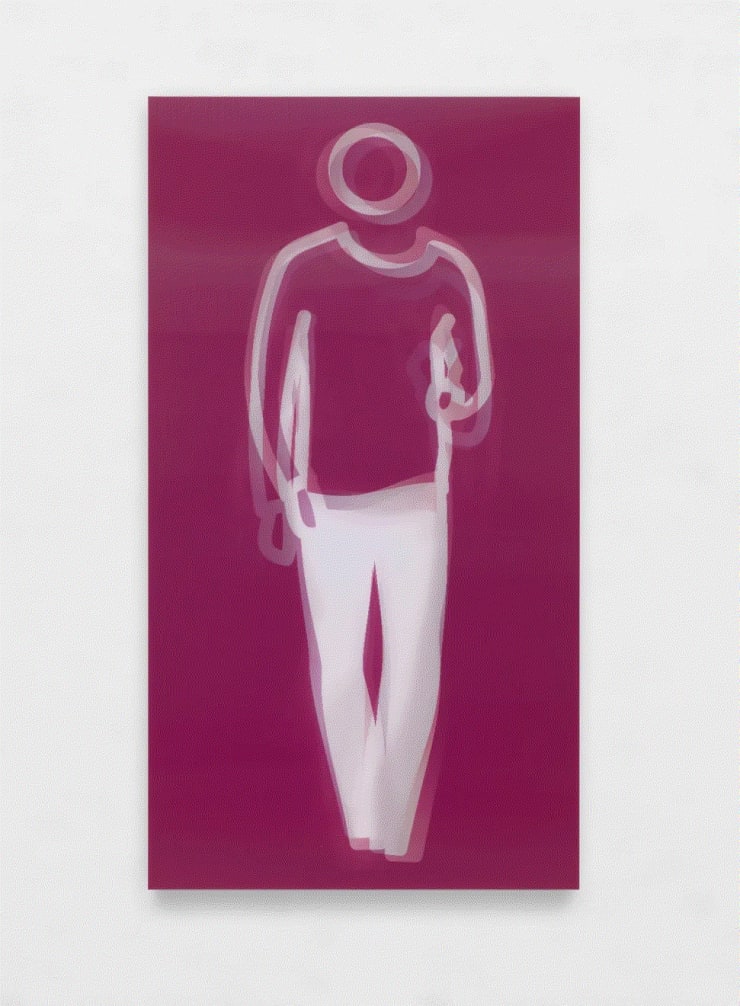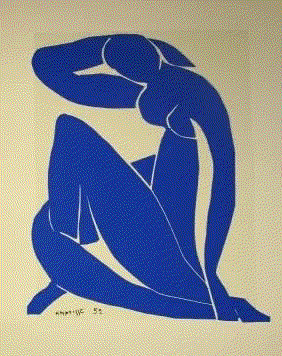So far this year, Julian Opie’s works have been exhibited in London, Milan, Guangdong, TianJin, Palma de Mallorca, Leon, Boston, Munich and Krakow.
Opie’s minimalis-style portraits have universal appeal. His work with technology and varied media have made him an international success.
In addition to his paintings and prints of faces and figures, Opie has also created works of moving figures. “One day , I was sitting in my car waiting for one of my children to come out of school in a bored semi-trance,” he said in a recent interview in Art Plugged magazine, “when I saw the people passing by as a kind of picture, like a classical frieze of dynamic bodies that flowed endlessly like a river. I imagined drawing the individuals and combining them into crowds.”
Opie has done that successfully in works like Sidewalk 2, available at VFA, in which he has captured the movement of the crowd.
He has also managed to created movement with his series of Dance Figures, cleverly mounted figures that move according to the viewer’s perspective. Dance Figure 3 and Dance Figure 4 are available at VFA.
Works by Julian Opie will be featured in the VFA Booth at the upcoming Art on Paper Fair in New York, September 5-8, along with works by Alex Katz, Polly Apfelbaum, Roy Lichtenstein, Harland Miller, Robert Longo and other fine artists.
The Barnes Foundation in Philadelphia is renovating its second floor galleries, and things had to be moved around. The problem of where to store some of the works during the renovation led two of the Foundation’s curators to come up with the idea of exhibiting works by Pierre-August Renoir (1841-1919) with works by Henri Matisse (1869-1954).
The works of both artists are instantly recognizable, and although their styles differ, their admiration was mutual.
Renoir, nearly thirty years older than Matisse, had been an inspiration to the younger artist and to many others who came after him. Matisse visited Renoir at his home in Cagnes-sur-Mer, near the Mediterranean Coast. Renoir had chosen to live in a warm climate because he suffered from debilitating rheumatoid arthritis and had to hold a paint brush with stiff fingers and poke, rather than brush, paint onto the canvas.
“Even as his body was going into decline,” Matisse wrote, “his soul seemed to become stronger and to express itself with a more radiant facility.”
Matisse also suffered ill health in his later years and became confined to a wheelchair. He began to create paper cut-outs with bold colors and simplified designs. The words that Matisse said about his friend, Renoir, could have been said of Matisse, as well.
Matisse & Renoir: New Encounters at the Barnes will be on view through September 8, 2024.
Please contact us if you would like more information about the works of Julian Opie and Henri Matisse, or any of the other fine artists, available at VFA.
References:
Len Gordon. Julian Opie: I Play with What I See in Nature and Culture. Art Plugged. July 15, 2024.
Richard Covington. Renoir’s Controversial Second Act. Smithsonian Magazine. February 2010.
Judith Stein. A Joyful Meeting of Matisse and Renoir. Hyperallergic. August 19, 2024.













